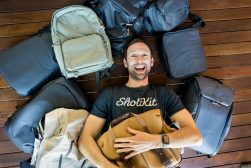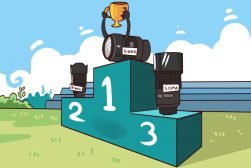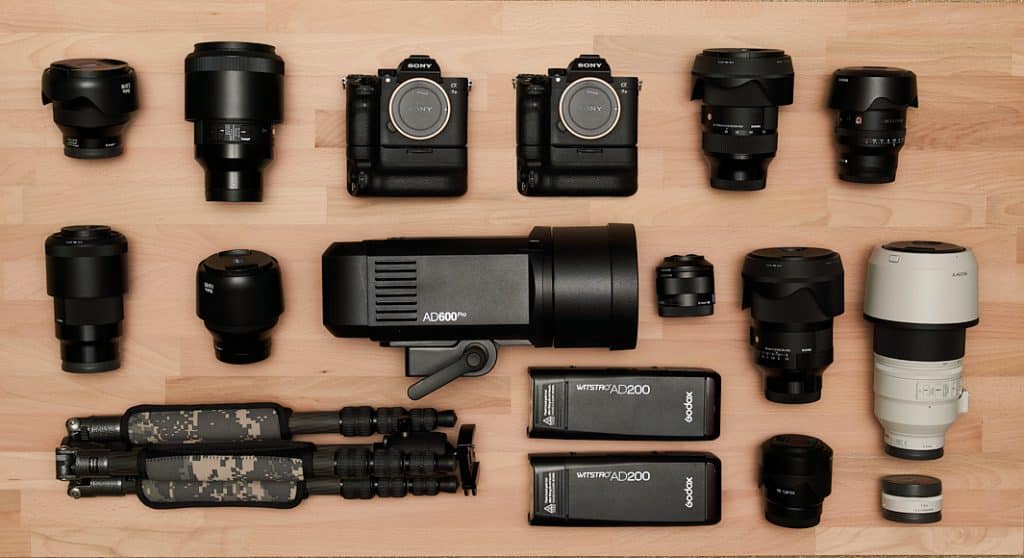
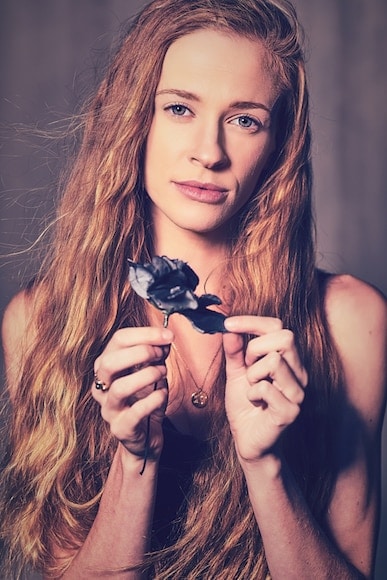
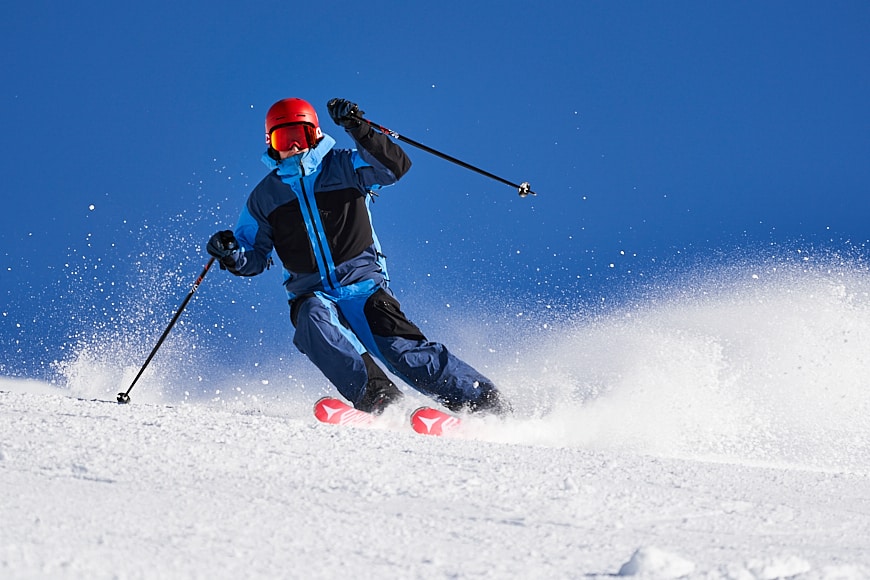

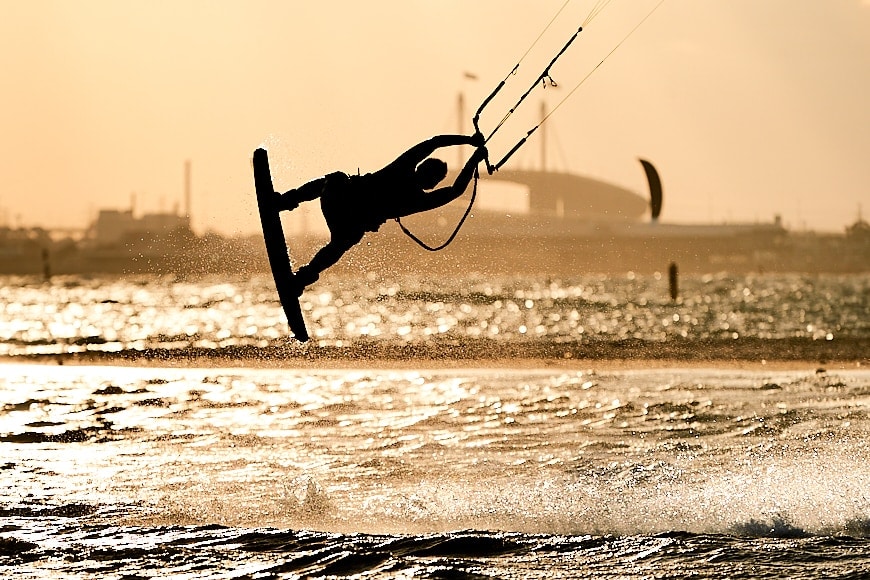

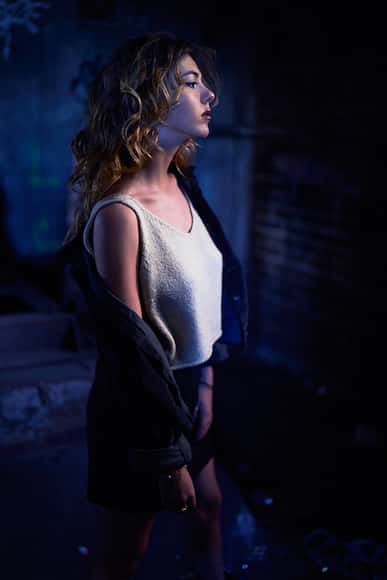
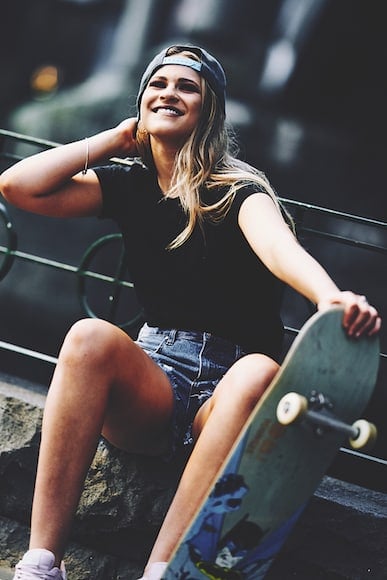
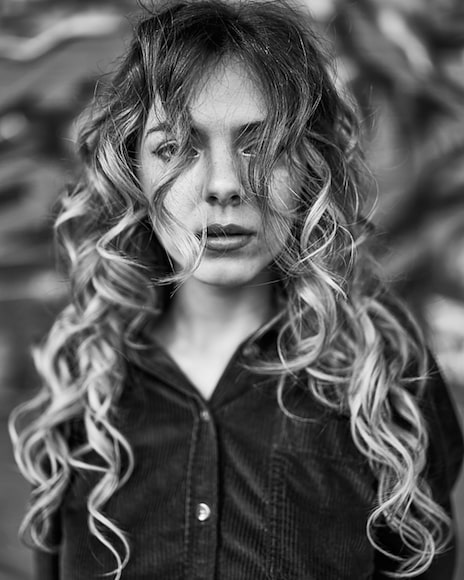
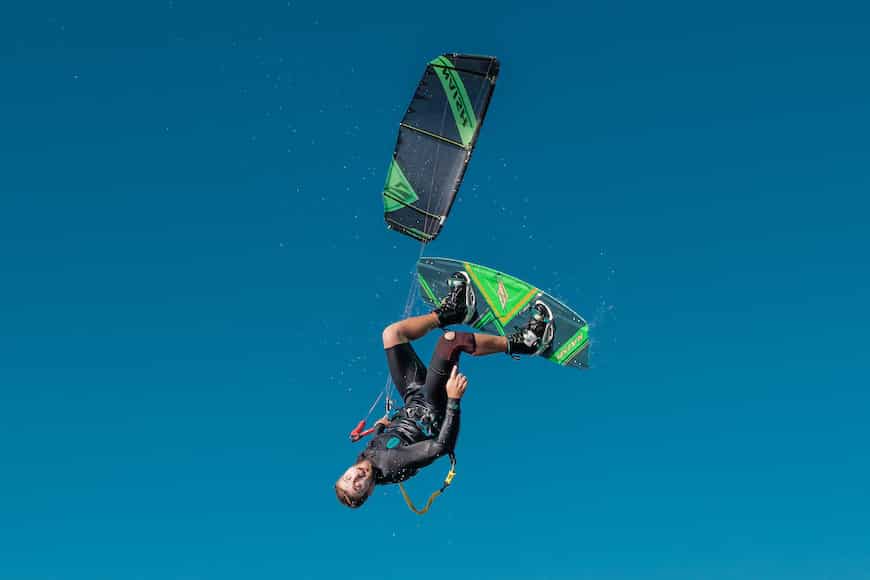
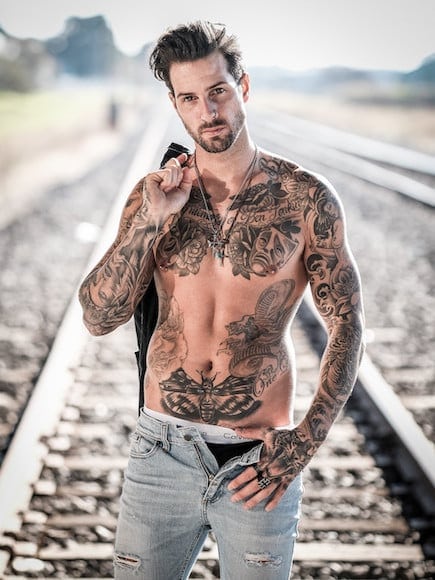

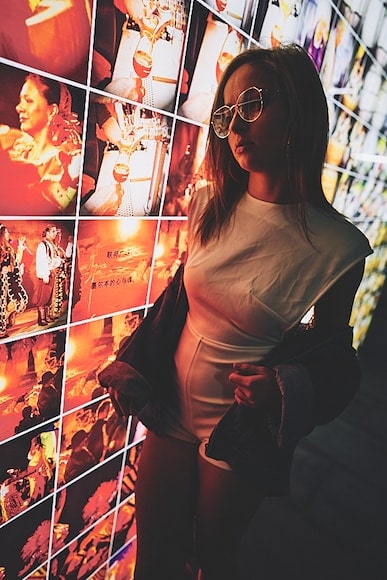
Hi, I’m an Australian photographer based out of a city called Melbourne. I’m a bit of a schizophrenic when it comes to my genres. I play across multiple and probably do them all badly as a result, but it helps with writing about gear.
Picking one would be impossible, but if I had to pick two, it would be sports and portraits.
I started in sports, as a participant myself, shooting my DSLR in “sports mode” whilst pretending I was a real photographer. I was better than everyone else because there was nobody else. Like anyone, as I got better, I found out what the M on the dial was for and took it from there.
I only started on portraits after the arrival of my two daughters. In short, my social life and free time evaporated as they do with kids. That meant little time to participate in sports and little opportunity to shoot sports.
It gave me an excuse to invest in more gear and my wife was happy. How was she to know that the latest Sony 100-400mm f/4.5-5.6 wasn’t an ideal portrait lens for the kids?
I progressively fell in love with portraits, particularly capturing emotion and artificial lighting, which I feel we never quite master.
I do still shoot sports regularly, and I find it sometimes helps me deal with those times when I need a break from photography; It feels like going back to my roots where everything comes naturally.
I have way more gear than my skill justifies. If they based your skill on the amount of gear you have, I’d be one of the best. Sadly, I’m not, but I’ll die with a lot of gear. I’m not going to pretend I have a need for it all, not even my wife believes my excuses anymore.
As you probably gathered, I’m a self-confessed gear head, which is why I also write for Shotkit. Getting a writing gig at Shotkit was like giving an endless supply of cocaine to a drug addict. It allows me the opportunity to try all the latest gear.
I started in Nikon and then shifted into mirrorless when I tried a mirrorless system and liked the WYSIWYG approach. Nikon didn’t have any formal direction with mirrorless 3 years ago, so I had to move systems. Sony was a logical choice for full-frame and maturity of systems.
Mirrorless and Eye-AF has been an eye-opener for me, excuse the pun. It’s killed the need to focus and recompose. I don’t use back focus nearly as much as I used to.
A couple of years back, choosing a mirrorless system was easy, but these days the choices would be a lot harder. Canon has done a lot to bridge the gap and Fujifilm is a serious contender if you don’t need full-frame.
I have acquired a lot of Sigma glass recently since they introduced their DG DN range. I find the quality is amazing and it doesn’t have the weight penalty that you used to have with Sigma.
Cameras
Sony A7 III with battery grip: This is primarily a sports, low-light camera (see guide). Most of the time I don’t need more than 24MP so I shoot this.
Sony A7R III with battery grip: I got this because the Sony bodies are the same and I wanted an occasional option for a higher MP camera. In reality, I use it more often than the Sony A7 III mainly because the EVF is better.
Lenses
Zeiss Batis 18mm f/2.8: My 18mm is mainly a wide-angle for sports (skateboarding, kiteboarding). I’ve tried zooms like the 16-35 and I prefer primes. A part of me wants to like zooms, and I’m tempted to try the Sigma 14-24mm, but I know it will probably gather dust.
Sony 24mm f/1.4: Another sports lens. This usually lives inside my water housing for kitesurfing. This is one of my favourites; It’s a unicorn lens when you consider the size, quality, and weight.
Sony Sonnar 35mm f/2.8: Every day carry lens. Doesn’t get much every day carry after I got the Sigma 35mm f/1.2 DG, but there are occasions I want to carry something tiny and this works.
Sigma 35mm f/1.2: If Chuck Norris did photography, he would use this lens. The way this lens renders is nothing short of spectacular. If you’re a Sony user, buy it.
Sony Zeiss 55mm f/1.8: This is a lightweight prime I use if I need something portrait and still small. I will often take this with my 35mm f/2.8 and 85mm f/1.8 if I want to travel light.
Sigma 70mm f/2.8: Mainly stock photos of gear for blogs and reviews. Nothing too exciting.
Zeiss Batis 85mm f/1.8: I prefer the 135mm focal length, but this is my go-to lens for indoor portraits if 135mm is too long. The colours on this lens are amazing.
Sigma 135mm f/1.8: I fell in love with the 135 focal when I was shooting APSC 90mm lenses. If you asked me about a favourite portrait focal length, this is it.
Sigma 24-70mm f/2.8: This is a recent addition. I still prefer primes but you don’t always have the luxury of carrying five primes with you to cover the range.
Sony 100-400mm f/4.5-5.6: My go-to lens for sports, in part, because of the size and, in part, because buying the 400mm f/2.8 would result in my disappearance and my wife is smart enough to make sure she never gets caught.
Lights/Triggers
Godox XPro Trigger: I think this is the best trigger you can buy on the market for the price. I honestly wouldn’t bother with the other triggers in Godox’s lineup unless Godox bring out an XPro 2 trigger.
Godox AD200 x2: I have two of these in total, in part for three light setups. This works for most of my lightweight carry. I also put an AD200 on top of a boom to allow me to get closer to the action with skateboarding.
Godox AD600 Pro: Despite the HSS capability, this is only used on the occasions I really need the power with a large softbox outdoors in the sun. It’s an amazing strobe but probably not getting the mileage it should under my watch
Godox V860II-S: Great speedlight. I use it mainly for bounce and stock photography. I’m not a fan of speedlights for portraits unless it’s just a hair light or something similar.
Lastolite Halo Reflector: This is probably the best compact reflector I’ve seen and a recent addition. It’s smaller than a water bottle. If you don’t have a reflector, you should buy one now.
Softboxes: Too many to list out but my favorite would be the Rimelight Speedbox 90
Light stands: Manfrotto Nano Lightstand for travel, a couple of Manfrotto 367B’s for everyday stuff, and an Avenger C Stand complete for big softboxes and my AD600 pro.
Bags/Straps
The bags part is a confessional moment for me. I feel like I should be in church when I type this. At any given time, I have about 15-20 bags in my collection, partly for reviews, and partly because I like bags. As I bring in new bags, I rotate out the old. I haven’t listed them here, I’ve just put down my current stuff.
Straps aren’t really my thing, I prefer holsters, but I have a Black Rapid I use in combination with a Spiderpro. Occasionally, if I use a holster, I’ll either use the Black Rapid or a custom leather dual holster.
Black Rapid Dual Camera: Mainly for beach events where I don’t like to wear leather. I always combine this with the arca clamps and Spiderpro holster.
Custom leather dual camera strap: Mainly for more formal events, as with the black rapid. I always combine this with the arca clamps and Spiderpro holster.
Spider Holster SpiderPro Dual Camera System with two Spider Pro Arca clamps: I like the Spiderpro because I think it’s the easiest way to work with two bodies.
The problem with straps is that I am clumsy and move without looking and that means I’m bound to turn around and swing my camera body into a toddler and have a lawsuit. The Spiderpro keeps it next to my body.
Wandrd Prvke 21L: I use this bag as an every day, commuter-to-work bag. The upside with having this a bag dedicated solely aside for work is I don’t find myself taking my laptop stuff out when I want to go out for some photography.
Pelican 1550: This was a recent pet project of mine for a long-term storage bag and replaced a ThinkTank Airport bag I had that was about 10 years old. I wanted something to keep my cameras and lenses dust-free. I’ve added Trekpak to this and it’s amazing.
Shimoda 40L: This is a heavy-duty bag I use when I go out for a model shoot and bring a lot of gear. I might load it up with dual bodies, a couple of Godox AD200’s, five or six big lenses, like the 35mm f/1.2 and 135 f/1.8.
I like it because it’s designed from the ground up to be a heavy-duty carry bag and if I am walking from location to location for hours, it’s comfortable.
Shimoda Explore 40: This is currently my lighting gear bag. The bag has a lot more capability than that, but in my case, I like to leave stuff in a bag and take it when I need to. I have it packed with an AD600 Pro, 2x AD200’s, reflectors, softboxes when I go out for a shoot that requires more lighting gear.
ONA Prince: I got this about 6 months after the Bowery, as I loved it so much, I wanted something slightly larger so I could carry some larger lenses.
It’s a nice compact bag if you want to head out with a body (no grip) and a couple of small lenses. I normally use this if I head out with my smaller primes lenses like my Zeiss Batis lenses.
ONA Camps Bay: This is one of those bags I can’t really justify given all the other bags I have but it’s such a beautiful bag that I take it out at every opportunity. I could try to think of a poor excuse like the others, but I’m not going to bother.
ONA Astoria: This is a work photography bag when I need quick access to lenses. I generally use this for events with two bodies, one generally armed with a 135mm f/1.8 and the other with a 35mm f/1.2.
Wotancraft Nomad Travel Bag: This is quickly becoming my favourite. It came with me on a trip to Europe with me where I took it out snowboarding with me. I love the flexibility and lightweight of the bag.
Tripods
Gitzo GT1541T with Markins Q3 Traveller: I was using a Manfrotto Befree until recently when someone offered me this near-new Gitzo at a crazy price
Sirui P-326 Monopod: This is a ridiculously good little monopod for the price. I use it mainly on the beach with my Sony 100-400
Hardware & Software
I used to use Lightroom but shifted to Capture One after a one month trial. It’s amazing.
• Capture One
• Portrait Pro
• Photoshop
I’m a light (and lazy) processor, so I don’t do too much to my photos other than some frequency separation on portraits.
Misc.
Not a lot because I can’t fit much more in my bags
I think the real epiphany for me in photography was reaching a point when I realised that photography wasn’t about, “being born with an eye for photography,” or pure talent. It came when someone seemed mesmerized about how I knew to frame a photo a particular way and use a specific angle.
I think it was that point that I realised that I was looking at myself five years before asking the same question to another photographer that I thought was talented.
I always thought photography was something you just had. I’ve come to realise that you develop an eye and your ability to “see” something in a location comes from experience and what you’ve learnt, not some creative gene you are born with.
I have no doubt that there are many who are like that, but I think that talent is more to do with their hard work than luck in their genes.
www.theoverratedphotographer.com | @op_sports

Check out these 8 essential tools to help you succeed as a professional photographer.
Includes limited-time discounts.






